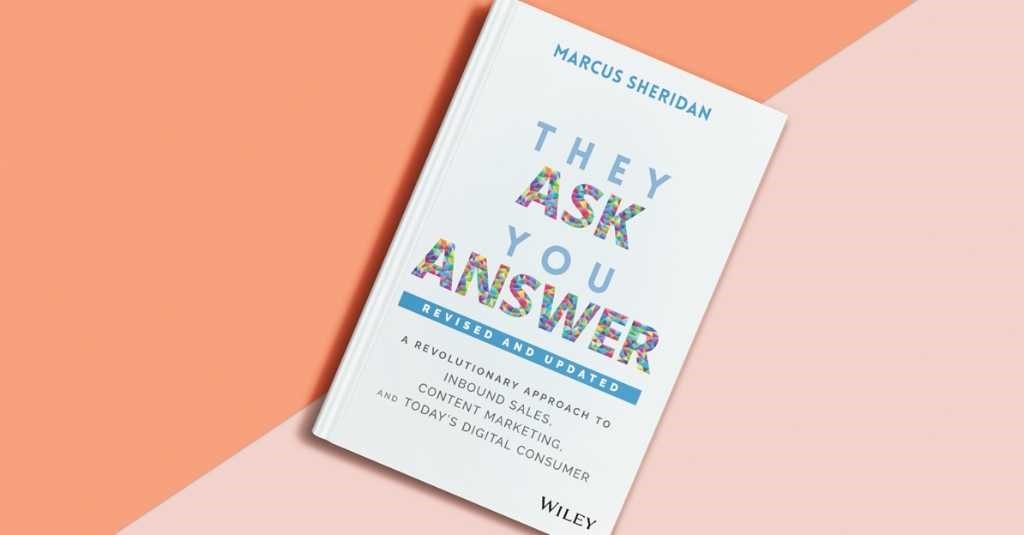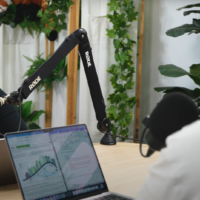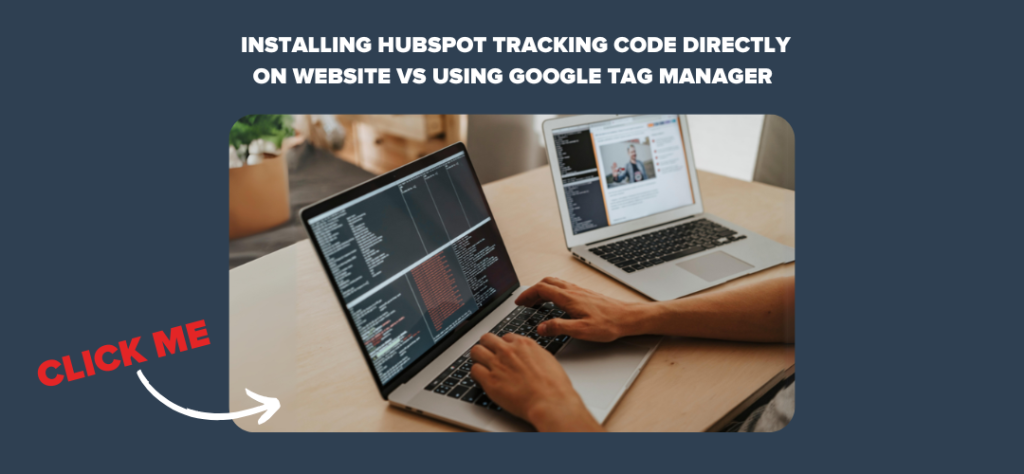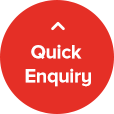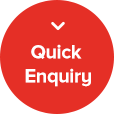Have you ever thrown money at Facebook or Instagram ads, only to watch your budget disappear with little to show for it? The truth is, a lot of businesses are making the same mistakes, and it’s costing them big time.
Facebook and Instagram ads don’t have to be a guessing game.
They can work.
They can bring in leads, increase sales, and boost your brand visibility.
But if you’re not careful, even small missteps can lead to disastrous results—and a drained marketing budget.
In this article, you will learn the real reasons your ads might be failing. We’re talking about the common, yet often overlooked, mistakes that most businesses are making. And more importantly, you will learn exactly how to fix them.
By the end of this, you’ll have a clear picture of what went wrong, what you need to change, and how to turn your Facebook and Instagram campaigns into the revenue-generating machines they should be.
Mistake #1: Incorrect Objective Chosen
Let’s talk about one of the biggest mistakes businesses make when running Facebook and Instagram ads: choosing the wrong objective. If you’ve been focusing on driving traffic to your website but hoping for more sales, you’re setting yourself up for failure—and wasting money in the process.
Here’s why: Facebook and Instagram’s algorithms are designed to show your ads to people who are most likely to take the action you’ve set in your campaign objective. The system works by “bucketting” users based on their behaviour. It tracks what people do—whether it’s liking a post, commenting, purchasing a product, or just browsing. Over time, it learns which users are more likely to take a particular action, and it adjusts to target those users more effectively.
This is where a lot of businesses go wrong.
Say you’re running an ad campaign to drive sales for a product, but you’ve selected Traffic as your campaign objective. Facebook will try to send your ad to users who are most likely to click on a link and visit your website—but not necessarily purchase anything. These people might be browsing, not buying. As a result, you’re paying for clicks from people who are less likely to convert, and you’re missing out on the people who are actually ready to make a purchase.
Now, imagine you’ve selected Conversions as your objective instead. This tells the algorithm, “Hey, I want people who are ready to make a purchase.” The system will then target users who are most likely to follow through on that action, based on their past behaviours. Suddenly, you’re not just getting traffic to your site; you’re getting the traffic that counts—users who are more likely to actually convert into customers.
So, what’s the takeaway here?
Always, always choose the right objective for what you’re trying to achieve. If you’re after sales, don’t opt for Traffic. If your goal is awareness, go with Reach or Impressions, not Conversions.
Choosing the right objective isn’t just about picking a setting—it’s about aligning with the algorithm’s behaviour-based targeting.
Get this wrong, and you’ll end up wasting your budget on the wrong kind of users.
Read: How to Improve Lead Quality from Your Paid Media Efforts

Mistake #2: Not Targeting Motivators in Creative & Copy
Another major mistake businesses make is failing to address the real pain points or desires of their audience in their ad creative and copy.
It might sound obvious, but it’s shocking how many businesses create ads that focus purely on their product features, rather than tapping into the deeper motivations that drive people to make purchases.
Here’s the thing: People don’t buy products; they buy outcomes.
Whether it’s alleviating a pain point or fulfilling a dream, your potential customers are motivated by very specific triggers.
If your ad creative doesn’t connect with those motivators, your message will fall flat—and your ads will fail to perform.
But what exactly do we mean by this?
- Pain Points: This is where people feel frustrated, stressed, or overwhelmed. If your product or service helps alleviate that feeling, you need to put that front and centre in your creative
- Example: Let’s say you sell a productivity tool for entrepreneurs. Instead of just saying “Our tool helps you manage your time better,” try addressing the pain: “Tired of juggling a million tasks and feeling overwhelmed? Our tool helps you stay on top, so you can finally focus on growing your business.”
By focusing on the pain of feeling overwhelmed, you’re speaking directly to the emotional state your target customer is likely in. You’ve now created an ad that resonates
- Example: Let’s say you sell a productivity tool for entrepreneurs. Instead of just saying “Our tool helps you manage your time better,” try addressing the pain: “Tired of juggling a million tasks and feeling overwhelmed? Our tool helps you stay on top, so you can finally focus on growing your business.”
- Dreams: On the flip side, some products or services tap into aspirations—the dreams people have for a better life, career, or self-image. When you position your product as the solution to achieving that dream, the emotional connection is even stronger
- Example: Let’s say you sell a luxury skincare brand. Instead of just showing the benefits (clear skin, hydration), you could speak to the dream: “Imagine waking up every day to glowing, youthful skin. Our products make that dream a reality, without the expensive spa treatments.” In this case, you’re not just selling skincare; you’re selling the dream of feeling confident, youthful, and radiant. That’s a powerful motivator
But how do I find these motivators?
Go straight to the source.
Dive into places where your target audience is already talking about their struggles and desires.
Some of the best places to find these motivators are:
- Reddit: Subreddits related to your product category or industry are gold mines for real, raw customer insights. Look for recurring themes in the way people talk about their problems and aspirations. If you’re selling a fitness product, for instance, browse subreddits like r/fitness or r/loseit to find out exactly what struggles people face on their fitness journeys
- Online Forums and Facebook Groups: Join discussions in Facebook groups, Quora threads, or niche online communities where your ideal customer hangs out. Pay attention to the language they use when talking about their problems or dreams
- Reviews & Testimonials: Go through reviews on your product or similar products. Read what customers say they love or hate about it. People are often very vocal about the things that frustrate them or the benefits they care about most
- Customer Surveys and Interviews: If you have an existing customer base, don’t be afraid to ask them directly. Conduct surveys, send out polls, or even hop on quick interviews to understand what’s driving them to purchase your product or service
Once you have a clear understanding of these pain points and desires, you can weave them into your ad creative.
Speak directly to the problems and dreams your audience is already talking about.
When you do this, your ads will feel much more relevant and persuasive.
How do I implement this in my ad creative?
One strategy you can use is to organise your motivators in a table like the below. You want to include what the motivator is, the angle you’ll tackle it from, and the vocabulary you might use within the ad. Notice how in the table some of the vocabulary listed are actual phrases that our target audience might say, which you would discover when you do the research on reddit forums and what not.
Your table might look something like this:
| Pain Point or Desire | Ad Angle | Vocabulary Used to Target |
| Overwhelmed with daily tasks | “This App Helped 1000+ Aussie Men Recover From Corporate Stress & Overwhelm in Just 3 Days” | “I’m drowning in tasks”, “I can’t seem to catch a break”, “I wish I could just have some time for myself” |
| Struggling with weight loss | “Lose 10kg in 6 Weeks Without Starving or Extreme Workouts – Here’s How” | “I want to lose weight but I don’t want to feel miserable”, “I’m tired of fad diets”, “I just want something that works and fits my life” |
| Lack of time for self-care | “How 5-Minute Self-Care Routines are Changing the Lives of Busy Professionals” | “I don’t have time for myself”, “Self-care feels like a luxury I can’t afford”, “I need something quick and easy” |
| Financial stress or budget concerns | “Save $500 a Month on Personal Trainers & Still Get That Six Pack You’ve Always Wanted” | “Personal trainers are too expensive”, “I need to save money but still want results”, “I can’t justify spending that much” |
| Not feeling confident in appearance | “Feel Confident in Your Skin Again: The Secret to Glowing Skin After 40” | “I don’t feel like myself anymore”, “I miss feeling good in my own skin”, “I just want to look in the mirror and feel happy” |
| Frustration with technology (complexity) | “The Simple 3-Step Solution to Organise Your Life Without Any Tech Overload” | “Technology is so overwhelming”, “I need something that doesn’t make me feel stupid”, “I want something simple that just works” |
| Desire for financial freedom or independence | “How 100+ People Quit Their 9-5 Jobs Using This Simple Investment Tool” | “I want to escape the 9-5 grind”, “I need to make my money work for me”, “I want to be financially independent” |
| Lack of motivation to work out | “How Our App Keeps You Motivated to Work Out – Even on Your Toughest Days” | “I just don’t feel motivated anymore”, “I wish working out wasn’t such a chore”, “I need something that pushes me to keep going” |
Read: Instagram Ads vs Facebook Ads: Which Platform Should You Use?
Mistake #3: Lack of Recycling Creative and Constant Testing
One of the key reasons Facebook and Instagram ad campaigns fail is the failure to recycle creative and continually test new variations.
The truth is, ad creative fatigue is real—and it happens faster than most people realise. If you’re running the same ad for weeks or months, don’t be surprised if your results start to drop.
Why does this happen? Well, Facebook and Instagram’s algorithms are always looking for fresh, engaging content that resonates with your audience. When you show the same ad too many times, users start to ignore it. Even if your ad initially performed well, it will lose its effectiveness over time, leading to declining engagement and higher costs.
But here’s where the smart advertisers win: recycling and testing creative consistently.
Recycling ad creative isn’t just about refreshing the visuals. It’s about keeping your messaging relevant and engaging, and ensuring that your ads are still speaking to your audience’s current pain points and desires.
For example, let’s say you’re running an ad for a new fitness product, but after a few weeks, you’re seeing lower engagement. Instead of just letting that ad run into oblivion, refresh it.
Update the headline, swap out the images or video, or change the call to action. Sometimes, even a small change—like using a new testimonial or adjusting the ad copy—can breathe new life into a campaign and get it performing at its best again.
By recycling your ad creative regularly and constantly testing new variations, you ensure that your campaigns stay relevant, engaging, and profitable. Over time, this approach will allow you to consistently optimise your ads for maximum performance.
Mistake #4: No Use of Horizontal Scaling
One of the biggest mistakes in Facebook and Instagram ads is failing to scale horizontally.
When businesses scale their ads, they often default to vertical scaling—increasing the budget on existing campaigns or ads. While vertical scaling can work in certain situations, horizontal scaling is a more sustainable and often more effective method to reach a broader audience without risking diminishing returns.
What is Horizontal Scaling?
Horizontal scaling means expanding the reach of your ads by duplicating your successful ad sets and targeting new audiences.
Instead of just pouring more budget into a single ad set, you create additional ad sets, with different audience segments, and let the platform find new groups of people likely to convert.
You’re not increasing spend in a linear way—you’re multiplying the number of touchpoints.
Why Horizontal Scaling Works
- Avoids Ad Fatigue: One of the dangers of simply increasing your budget (vertical scaling) is that your audience may see the same ads repeatedly, leading to ad fatigue. People start ignoring your ads, and engagement drops. By scaling horizontally, you’re reaching new people, which keeps your campaign fresh and exciting
- Diverse Audiences: Horizontal scaling allows you to experiment with different audience segments. For example, if your initial ad campaign worked well with young professionals, you could expand to target parents or students. By testing more than one audience, you diversify your results and learn more about who is truly interested in your product
- Optimises Performance Across the Board: By targeting different audiences with the same high-performing creative, you can significantly boost your overall campaign performance. Essentially, you’re maximising the reach of your winning ad creative without just relying on more spend
How to Scale Horizontally
- Create More Ad Sets with Different Targeting: Once you’ve found a successful ad set, duplicate it without changing anything and let it run. You might be tempted to change an interest or behaviour, but you don’t need to. Meta will automatically find more users within your audience that you haven’t already targeted in previous ad sets, helping you scale effectively
- Test Different Creative: Horizontal scaling can also include testing different creatives within the same audience. If you have a winning ad set, try creating different versions of the ad (with a slight variation in the copy or visuals) to see which one resonates best with the new audience
- Use Lookalike Audiences: Once you have a customer base, creating lookalike audiences can be a powerful way to scale horizontally. Facebook can create audiences based on users who are similar to your current customers. This opens up new avenues to target fresh, relevant users who have a higher likelihood of converting
When Not to Use Horizontal Scaling
As powerful as horizontal scaling is, it’s not always the best option in every case. Here’s when you might want to reconsider or hold off on horizontal scaling:
- If you haven’t found a profitable audience yet, scaling horizontally may just spread your ad budget too thin without delivering results
- If your creative is underperforming, no amount of horizontal scaling will solve the problem. Ensure your creative is strong and aligned with the audience’s needs before scaling
Mistake #5: No Use of Vertical Scaling (or Too Much Vertical Scaling)
Vertical scaling is a natural part of most advertising campaigns. It involves increasing the budget for existing high-performing ad sets or campaigns to reach more people.
But there’s a fine line between scaling vertically and overdoing it. Too much vertical scaling can be bad because when large budget adjustments are made, an ad set exits the learning phase. Therefore, vertical scaling needs to be done incrementally at a small scale.
On top of this, not using it at all can leave potential growth on the table.
What is Vertical Scaling?
Vertical scaling is simply increasing your ad budget on existing campaigns and ad sets that are already performing well. The goal is to reach more of the same audience that you know responds positively to your ad, thus driving more conversions at a similar cost.
Vertical scaling is particularly useful when you have a campaign or ad set that is working well and you want to increase the volume of conversions without completely changing your strategy.
The more budget you allocate to a successful ad set, the more Facebook and Instagram will show your ad to the right people—those who have a high likelihood of converting.
But…here’s what happens if you “over-scale”
While vertical scaling is a powerful tool, over-scaling can cause problems. When you increase the budget too quickly or too much, you risk upsetting the delicate balance of your ad performance.
Here’s why:
- Audience Saturation: If you increase the budget too much on a single ad set, the same people may see the ad multiple times, leading to ad fatigue. This causes your engagement and conversion rates to drop, while your costs go up
- Decreased Efficiency: Facebook’s algorithm doesn’t always know how to handle a big budget increase. In some cases, a sharp jump in budget may cause the algorithm to “relearn,” which can temporarily cause performance fluctuations
So…what should I do instead?
To avoid these pitfalls and optimise vertical scaling, you can leverage automated rules.
Automated rules help you maintain control over your campaigns without constantly micromanaging them. Essentially, they allow you to set pre-defined conditions that automatically adjust your ads based on performance.
Here’s how you can use automated rules effectively in your vertical scaling efforts:
- Gradual Budget Increases: One of the smartest ways to scale vertically is to slowly increase the budget over time. Instead of doubling your budget overnight, set an automated rule to increase your budget by a set percentage (e.g., 5%) once your ad achieves certain performance benchmarks. This prevents the algorithm from overloading and gives it a chance to adjust smoothly
- Monitor Performance: Automated rules allow you to set performance-based conditions that can pause underperforming ads or boost high performers. For instance, if you notice that an ad set is generating conversions at a low cost, you can set the rule to automatically scale the budget without manual intervention
- Set Frequency Caps: To prevent ad fatigue, you can set frequency caps using automated rules. For example, you could stop serving your ads to the same users more than 3 times in a week to reduce overexposure and saturation
By incorporating automated rules into your strategy, you can efficiently scale campaigns while reducing manual intervention and optimising performance in real-time.
Read: How Much Do Facebook Ads Cost in Australia?
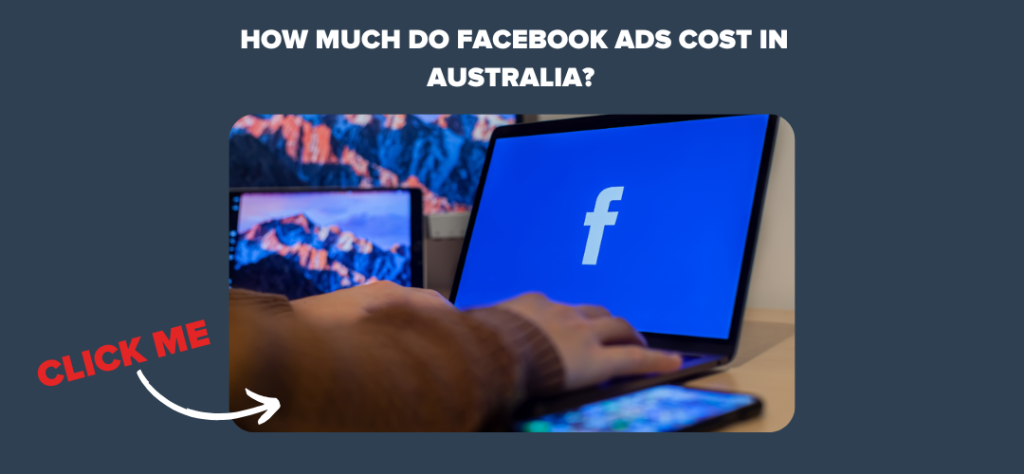
Mistake #6: Incorrect Data Tracking Setup
At the core of every successful ad campaign is data. It’s what allows you to track your performance, optimise your ads, and make informed decisions.
However, many businesses overlook the importance of correctly setting up their data tracking, and this can lead to wasted ad spend, missed opportunities, and faulty decision-making.
If you don’t have your tracking set up properly, you can’t measure success accurately, which means you can’t improve or scale effectively.
In the context of Facebook and Instagram advertising, data tracking is the process of measuring and collecting information about how users interact with your ads. The key is to track the right actions—conversions, clicks, views, engagements, etc.—to understand how effective your ads are at driving the desired outcome.
There are two main components of data tracking that businesses must get right:
- Facebook Pixel: This is a small piece of code you place on your website so that when user’s visit your website you can retarget them effectively
- Event Tracking: You can set up standard events that track actions on your website, like button clicks, specific page views, add to carts, and so on, and then you can optimise for these events when setting up your ads. If you set it up incorrectly or you don’t give Meta this data, the algorithm has less information to go off and therefore less opportunities to get you better results
Without proper tracking, you’re essentially flying blind. Here’s why an incorrect tracking setup can sabotage your campaigns:
- Wasted Spend: If your Pixel is not tracking conversions correctly, you may end up spending money on ads that aren’t even driving the results you’re looking for. Without clear insights into what’s working, you’ll waste budget on ineffective ads and audience segments
- Poor Optimisation: Facebook’s algorithm relies heavily on the data it receives to optimise ad delivery. If your data is incorrect or missing, the algorithm won’t have the right signals to know who to target, and your ads will be less efficient. For example, if you’re tracking page views instead of actual purchases, Facebook will optimise for the wrong action
- Inaccurate ROI: If your conversion tracking is set up incorrectly, it’s difficult to accurately measure return on investment (ROI). Without clear insights into the cost per lead or customer, you won’t know whether your ads are profitable or where to focus your budget
- Limited Insights for Testing: Proper data tracking is essential for split testing and understanding which elements of your campaigns are performing best. If you’re not tracking the right metrics, your tests won’t give you the information you need to optimise your ads for better results
Data tracking is the backbone of effective Facebook and Instagram advertising. Without properly set up tracking, you won’t be able to accurately measure the success of your campaigns, optimise for better results, or scale effectively.
Read: Installing HubSpot Tracking Code Directly on Website vs Using Google Tag Manager
So, What’s Next?
If your Facebook and Instagram ad campaigns aren’t delivering the results you expect, it’s often because of one or more of these common mistakes.
Earlier in this article, you learnt just how important ad creative is. To help you optimise this, learn about our five step ad audit checklist so you can test whether your creatives are up to par.

